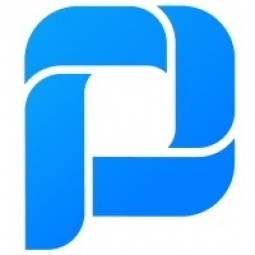Customer Company Size
Large Corporate
Region
- America
Country
- Ecuador
Product
- SINE (Electronic Notification System)
- ProcessMaker
Tech Stack
- Cloud based Workflow
- BPM software suite
Implementation Scale
- Enterprise-wide Deployment
Impact Metrics
- Productivity Improvements
- Cost Savings
Technology Category
- Platform as a Service (PaaS) - Application Development Platforms
Applicable Industries
- Cities & Municipalities
Applicable Functions
- Business Operation
Use Cases
- Public Transportation Management
Services
- Cloud Planning, Design & Implementation Services
About The Customer
The National Directorate of Public Data Registry is responsible for designing, implementing and managing the National System of Public Data Registry. This system consists of public institutions, public registration information of private institutions, the set of rules, policies, tools, processes, activities and resources to achieve the access and transparency of public registration information. It establishes the mechanisms of regulation and exchange of information with the entities that have public data records to consolidate in a single database.
The Challenge
Before implementing the SINE, DINARDAP processed all its notifications for judgments through letters sent to 237 property registries in different jurisdictions of Ecuador. This process that previously took 90 days, today is done online, thus reducing time, paper, state costs, and increasing legal security. This technological tool allows public entities exercising coercive or judicial actions to send notices online to various registry institutions nationwide for requesting transfer bans, prohibitions cancellation, official reports, among other things.
The Solution
DINARDAP currently has one automated process (SINE). The process begins from filling out a web form found on the website of the DINARDAP from which starts a case in the SINE. This notification is sent by the judge to the different districts of Ecuador to validate and confirm the information requested. The process is currently executed in about fifteen days. Around 1,500 to 2,000 cases are started each day among 250 judges who in turn send the request to the 237 property registries and provide the final answer to the filer. Through the implementation of the SINE, all judges of the DINARDAP by presidential decree must carry out electronic notifications for the following cases: Alienation of Property, Property Information Request, Property Registry. This technological tool converts the Property and Mercantile Registries of Ecuador in the most developed in Latin America. ProcessMaker allows sending information in real time optimizing resources and providing legal security to documents.
Operational Impact
Quantitative Benefit

Case Study missing?
Start adding your own!
Register with your work email and create a new case study profile for your business.
Related Case Studies.

Case Study
Turning A Stadium Into A Smart Building
Honeywell created what it called the “intelligent system” for the National Stadium in Beijing, China, turning the venue for the opening and closing events at the 2008 Summer Olympics into a “smart building.” Designed by highly controversial artist Ai Weiwei, the “Bird’s Nest” remains one of the most impressive feats of stadium architecture in the world. The 250,000 square meter structure housed more than 100,000 athletes and spectators at a time. To accommodate such capacity, China turned to Honeywell’s EBI Integrated Building Management System to create an integrated “intelligent system” for improved building security, safety and energy efficiency.
.png)
Case Study
Smart Street Light Network (Copenhagen)
Key stakeholders are taking a comprehensive approach to rethinking smart city innovation. City leaders have collaborated through partnerships involving government, research institutions and solution providers. The Copenhagen Solutions Lab is one of the leading organizations at the forefront of this movement. By bringing together manufacturers with municipal buyers, the Copenhagen Solutions Lab has catalyzed the development and deployment of next-generation smart city innovations. Copenhagen is leveraging this unique approach to accelerate the implementation of smart city solutions. One of the primary focus areas is LED street lighting.

Case Study
Buoy Status Monitoring with LoRa
The Netherlands are well-known for their inland waterways, canals, sluices and of course port activities. The Dutch Ministry of Infrastructure indicates that there are thousands of buoys and fixed items in and near water environments that would profit from IoT monitoring. One of the problems with buoys for example, is that they get hit by ships and the anchor cable breaks. Without connectivity, it takes quite some time to find out that something has happened with that buoy. Not to mention the costs of renting a boat to go to the buoy to fix it. Another important issue, is that there is no real-time monitoring of the buoys at this moment. Only by physically visiting the object on the water, one gains insight in its status.

Case Study
Barcelona Case Study
Barcelona’s heavy traffic and its associated high levels of pollution were the primary factors that motivated some companies and universities to work on strategies for improving traffic in the city centre. Bitcarrier is one of the technologies involved in the In4Mo Project, whose main objective is to develop the applications that form the core of smart mobility, one of the fundamental pillars of the smart city concept.

Case Study
China Mobile Smart Parking
Smart Parking, powered by NB-IoT technology, is making it easier for drivers to find free parking spots. Cities can better manage their parking assets and maximize the revenue available to them as a result. Drivers searching for parking create congestion and pollution by circling and hunting for available parking. Smart Parking services are able to significantly ease these problems by guiding a driver directly to a parking space.








